Caught in a cat-and-mouse game trying to medicate your feline friend? You're not alone! This is a common challenge for cat owners everywhere.
Even our cat forums are buzzing about it. It's a puzzle that has many of us stumped. But don't worry, there's a solution to this seemingly impossible task.
We've gathered some tried-and-true strategies on how to give your cat a pill without the fuss.
It's simpler than you might think, and it's all about understanding your cat's behavior and using it to your advantage.
So, stick around. This information could make a world of difference for you and your whiskered companion.
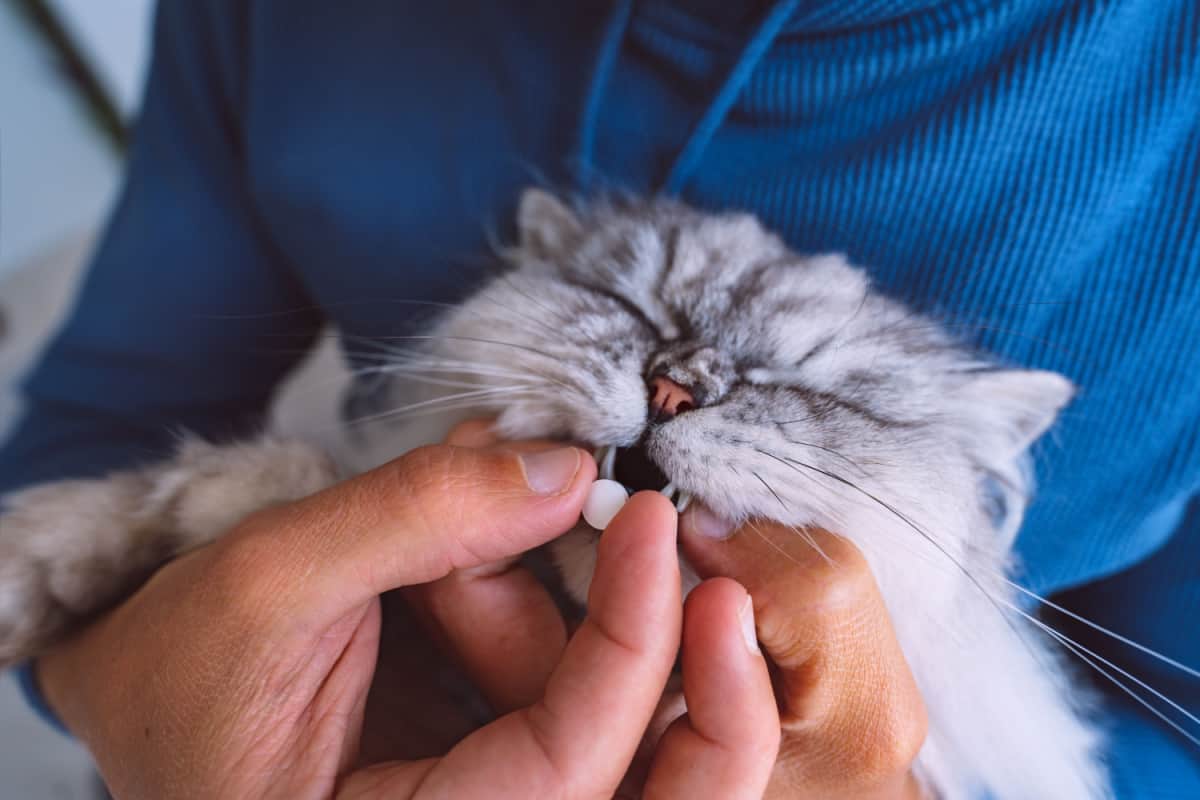
The Basic Procedure: Giving Your Cat a Pill
Technically speaking, the procedure of giving a pill to your cat is straightforward. Here's a step-by-step guide:
1. Positioning Your Hands
The first step in giving your cat a pill involves positioning your hands correctly. Place your thumb and forefinger on each side of your cat's mouth.
This gives you control over the cat's head and allows you to gently open their mouth in the next step.
2. Opening the Cat's Mouth
With your hands in position, apply gentle pressure to open the cat's mouth. This step requires patience and care, as you don't want to startle or hurt your feline friend.
3. Lowering the Cat's Jaw
Once the cat's mouth is open, use your other hand to gently press down the lower jaw. This creates enough space for you to place the pill onto the cat's tongue.
4. Placing the Pill
Now comes the crucial part: placing the pill. Aim to pop the pill deep inside, onto the back of the tongue. This placement makes it harder for the cat to spit out the pill.
5. Closing the Cat's Mouth
After placing the pill, close the cat's mouth and hold it gently but firmly. This prevents the cat from spitting out the pill and prepares them for the swallowing process.
6. Encouraging Swallowing
Finally, massage the cat's throat until they swallow. Look out for the telltale sign of successful pill administration: the cat's tongue popping out to lick the nose.
When you see this, you can breathe a sigh of relief. Well done, the pill is in!
The steps may sound simple, but the real challenge lies in getting your cat to cooperate.
How do you get your cat to let you gently press their jaws and pop in that little pill? That's the question we'll tackle next.
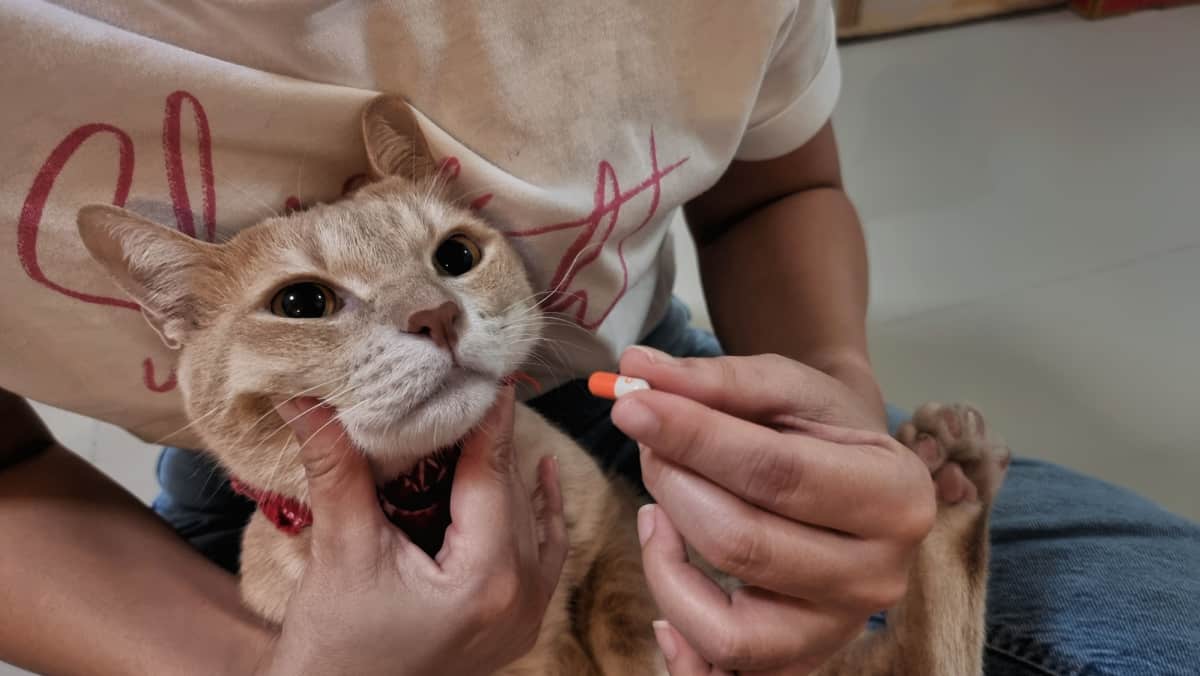
The Art of Restraint: Ensuring a Safe Pill Administration
Administering a pill to your cat often requires some level of restraint. The method you choose will depend on your cat's temperament and your comfort level.
1. The Table Technique
For some cats, simply placing them on a table and holding them firmly under your arm might suffice. Your hands are then free to administer the pill.
2. The Kneeling Approach
An alternative technique involves kneeling on the floor with your feet folded under you.
Position the cat between your legs, with her head facing forward. This setup prevents the cat from backing away during the process.
SIGN UP FOR THECATSITE'S EMAIL UPDATES >
3. The Buddy System
For more spirited cats, you might need a helper. Choose someone who is familiar with cats and can approach the task calmly and confidently.
It's best if the helper knows the specific cat you're medicating. They should hold the cat firmly, preferably by the scruff, while supporting the cat's body.
4. The Towel Wrap
If there's a risk of clawing, consider wrapping the cat in a thick towel, leaving only the head exposed. This method provides a safe way to restrain the cat without risking injury.
Regardless of the method you choose, remember to stay calm and act quickly.
Minimize the time you need to restrain your cat and aim to keep the process as stress-free as possible.
Your calm demeanor will help put your cat at ease, making the task smoother for both of you.
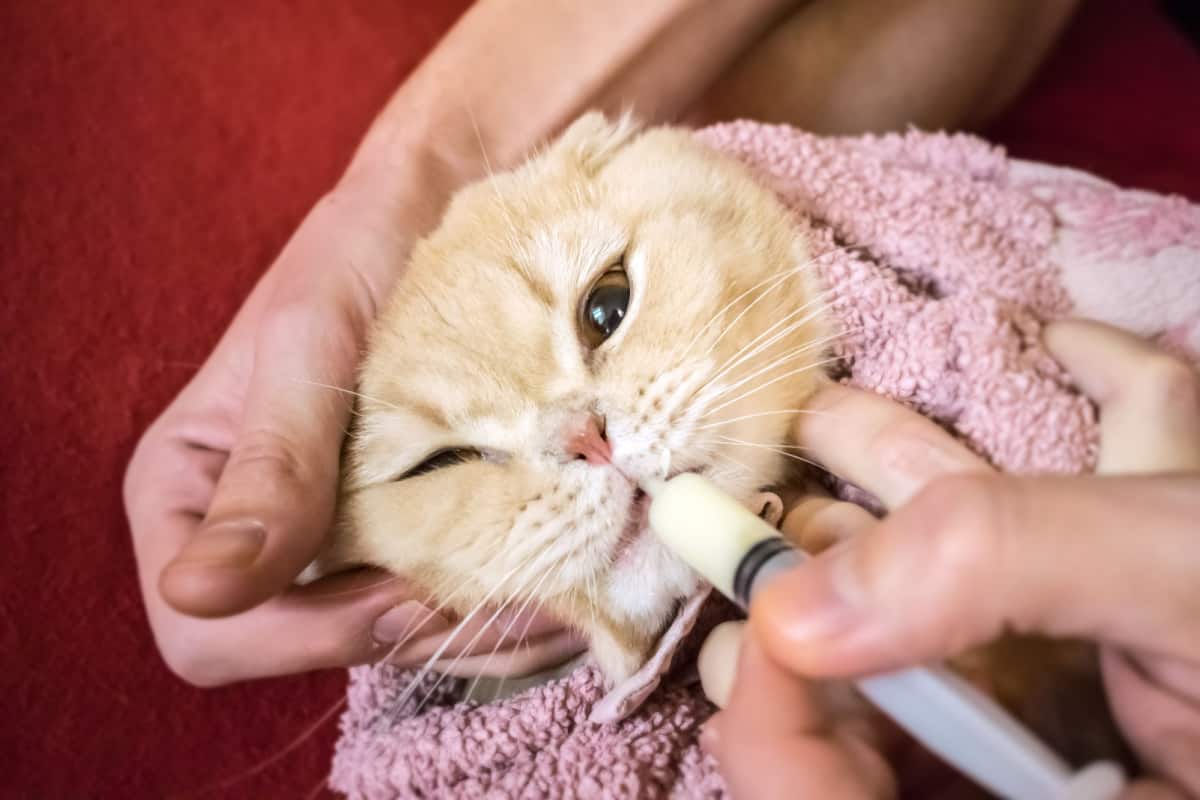
More Handy Hints for Hassle-Free Cat Medication
Administering a pill to your cat can be a tricky task. Here are some tips to make the process smoother and more effective.
1. Butter It Up
Coat the pill with a little bit of butter. This not only enhances the taste but also helps the pill slide down your cat's throat more easily.
2. Use a Pill Popper
A pill popper can be a game-changer. It allows you to quickly and effectively place the pill on the cat's tongue without risking your fingers.
Remember, the goal is not to shoot the pill down the cat's throat but to position it on the tongue where the cat will naturally swallow it.
3. Don't Break the Pill
Avoid breaking the pill. Many pills have a coating designed to mask the taste of the medicine. Breaking the pill can expose the bitter taste, potentially leading to a foaming cat.
4. Explore Flavored Medication
Some medications come in pet-friendly flavors. Consult your vet about these options to make medication time more appealing for your cat.
5. Hide the Pill in a Treat
Consider hiding the pill inside a cat treat. Some treats are designed with a hollow center for this purpose.
However, this method may not work for all cats or all types of medicine. Some cats can detect the medicine and will either ignore the treat or spit out the pill.
6. Consider Liquid Medication
Ask your vet if the medication is available in liquid form. Administering liquid medication with a syringe (without the needle, of course) can sometimes be easier.
No matter which technique or tips you choose to follow, always remember to plan and keep the procedure as quick and calm as possible.
Your preparation and composure can make a world of difference in making the process stress-free for both you and your cat.
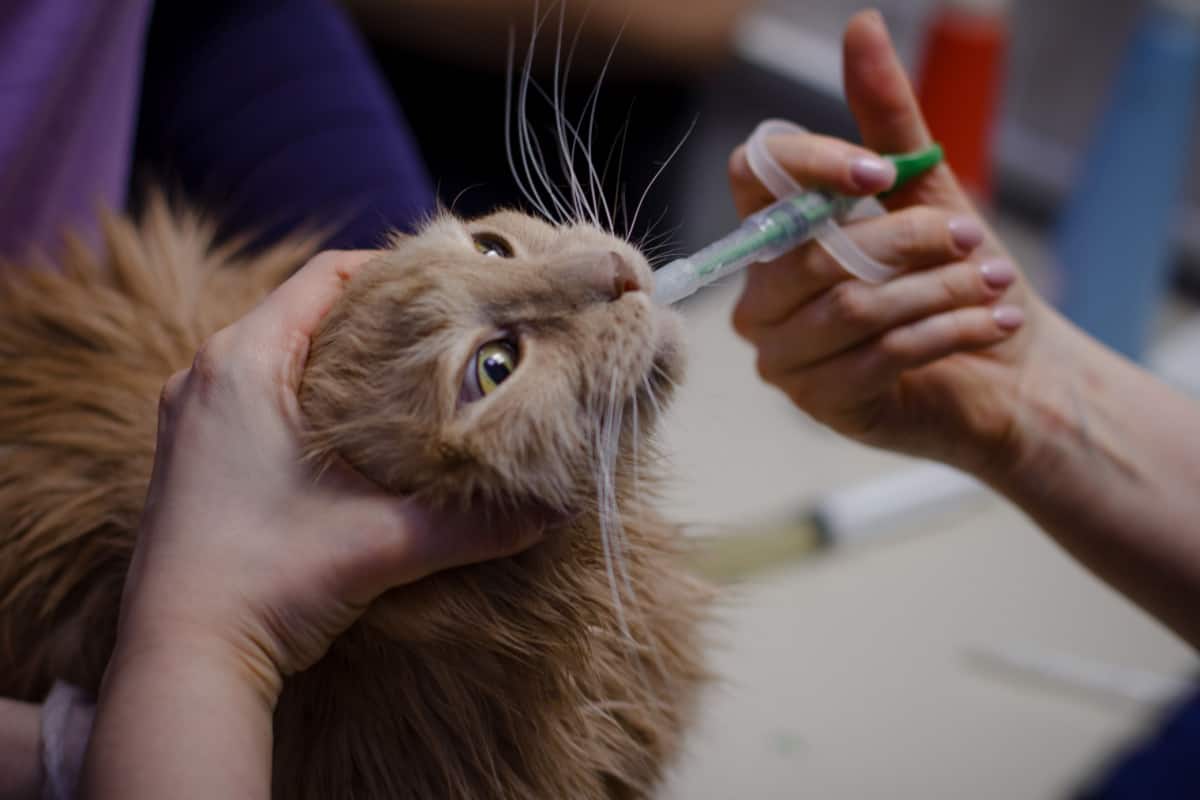
When Pilling Isn't an Option: Alternative Medication Methods for Your Cat
Administering a pill to your cat isn't always possible. Some cats can be particularly resistant, turning into what one of our forum members affectionately described as "Tasmanian Devils."
In such cases, the risk of injury to both the cat and the owner can make pilling an impractical option.
Understanding Your Cat's Resistance
If you find yourself asking, "How can I give a pill to my cat?" and the answer is consistent, "You can't," it's time to explore other options.
It's important to recognize that every cat is unique, and what works for one may not work for another.
Consulting Your Vet for Alternatives
If your feline friend falls into the 'difficult-to-pill' category, don't despair. Consult your vet about alternative methods of administering the necessary medication.
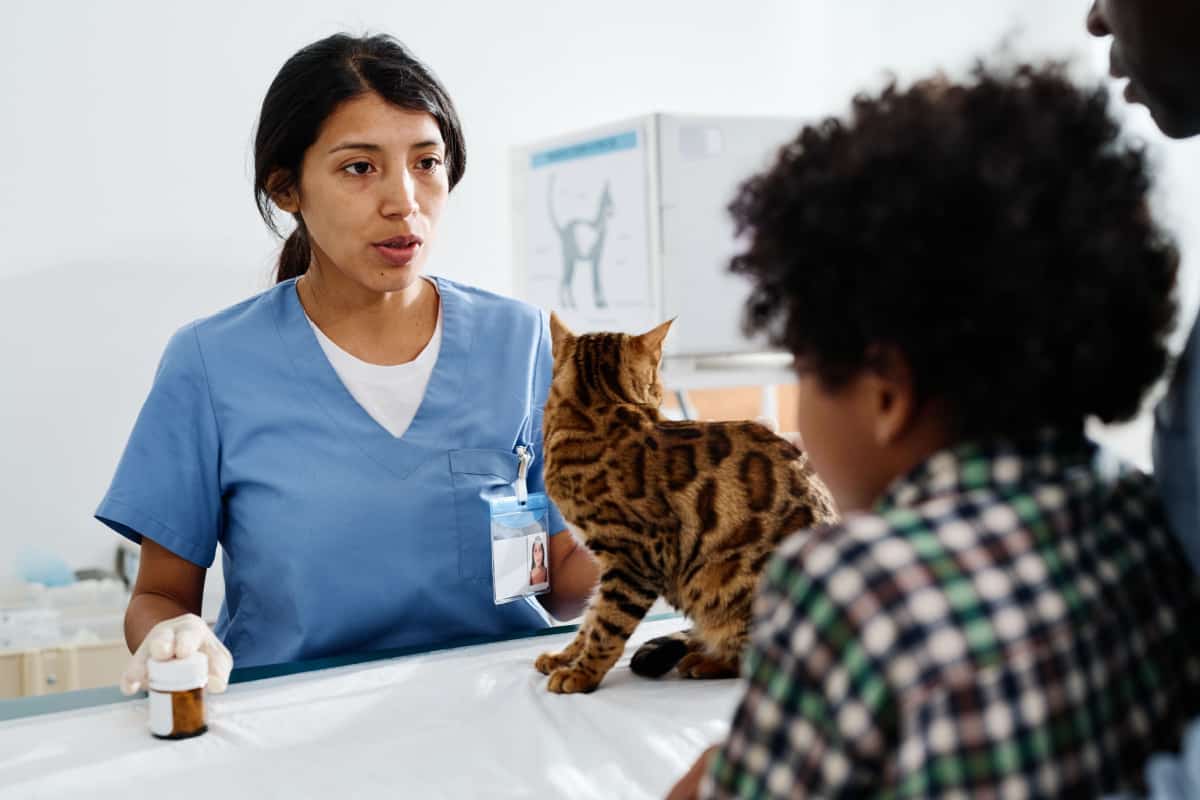
Exploring Paste Medication
Your vet may be able to provide the same treatment in the form of a paste.
This can often be mixed with food or applied to the cat's paw for them to lick off, making it a less stressful option for both you and your cat.
Considering Injections
In some cases, injections might be a viable alternative. While this might sound daunting, many owners find it easier than pilling, especially with a bit of guidance from their vet.
Nothing Quite Like Personal Experience
Sometimes, despite our best efforts, traditional pilling methods don't work. Some cats are incredibly resistant, making the process stressful and potentially harmful.
If you're dealing with such a situation, you're not alone. Here are some insights from our forum and team member, Columbine, who faced a similar challenge.
Columbine's Journey: From Despair to Success
Columbine's cat, Calidor, was diagnosed with heart disease and needed daily medication.
However, Calidor was extremely resistant to taking pills, and attempts to medicate him often resulted in stressful chases around the house.
Eventually, the stress of pilling became so intense that the vet decided it was doing more harm than good.
As Calidor's condition worsened, it became crucial for him to receive his medication. Columbine had to find a way to make it work. The solution? Liquid medication.
Unlike pills, Calidor couldn't hide the liquid in his mouth and spit it out later.
The Game-Changer: Timing and Patience
Columbine discovered that timing was crucial. Instead of sticking to a rigid schedule, she waited for Calidor to be relaxed before attempting to medicate him.
This approach, combined with staying calm and patient, significantly reduced the stress for both of them.
Columbine's Step-by-Step Guide to Stress-Free Medication
Here's Columbine's method for administering medication to a resistant cat:
1. Wait for the Right Moment
Wait until the cat is relaxed and settled in a convenient place.
2. Prepare the Medication
Have the pill or syringe ready.
3. Position Yourself
Approach the cat and use your non-dominant hand to gently restrain forward movement. Use your body to block backward movement.
4. Administer the Medication
Encourage the cat to open its mouth and slip the pill or syringe tip into the mouth. Aim for the back of the cheek rather than straight down the throat.
5. Reward the Cat
After administering the medication, give your cat a head rub and some treats to take away the taste.
Key Takeaways from Columbine's Experience
Columbine's experience highlights the importance of staying calm, being firm, and moving swiftly.
It's also crucial to be prepared and have everything ready before starting the process. If the cat becomes too stressed or runs off, it's better to try again later when they're more settled.
Remember, the goal is to ensure your cat gets the necessary medication in the least stressful way possible.
If traditional pilling methods fail, don't despair. There are always alternative approaches to explore.
SIGN UP FOR THECATSITE'S EMAIL UPDATES >
Comments? Leave them using the form below. Questions? Please use the cat forums for those!
It would be helpful to share this information with your friends and family, especially those who have cats. Pin the image below to your social media to spread the info.
Read more on:
Pilling Cats: Must-know Tips For Hiding Pills
Are Alternative Treatments Safe For Cats?
Note: We may get commissions for purchases made through links on this page.



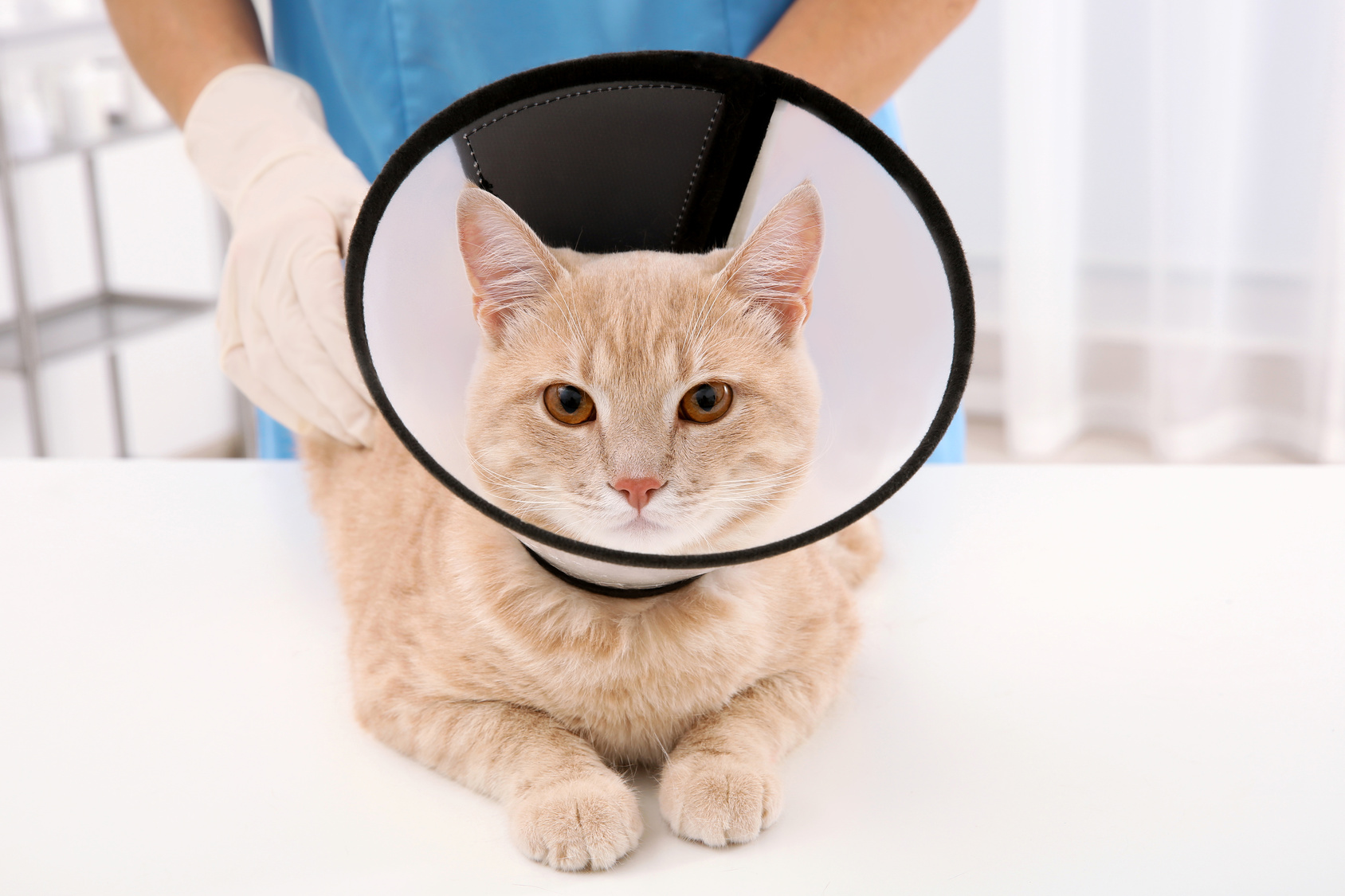

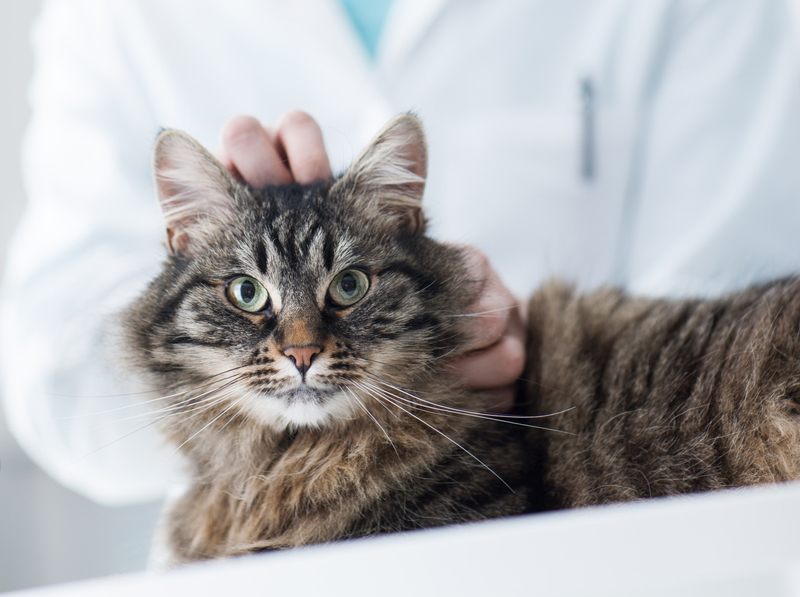
11 comments on “How Can I Give A Pill To My Cat? [Stress-Free Techniques]”